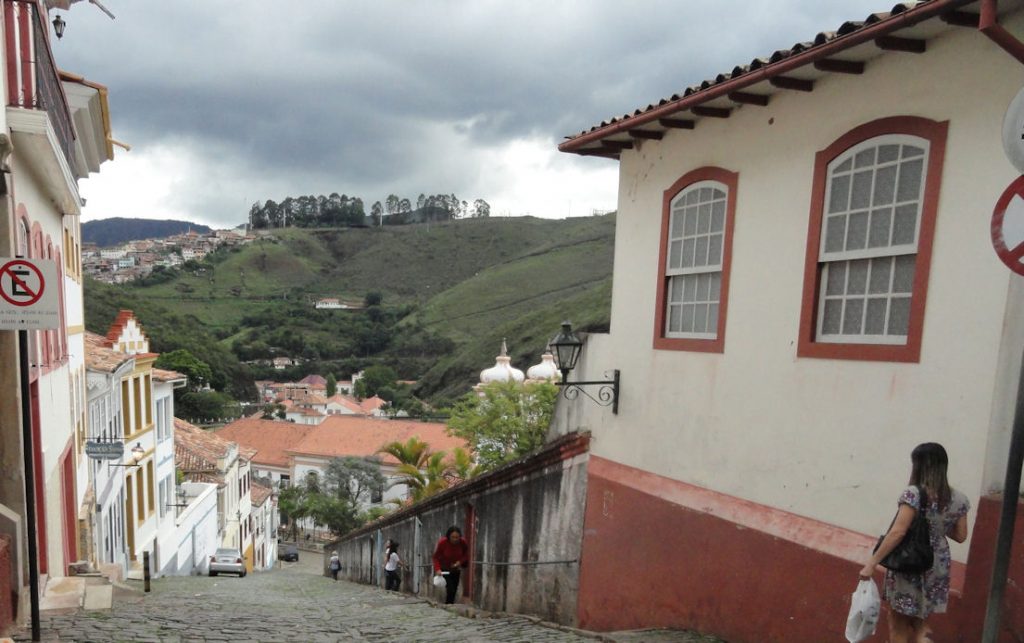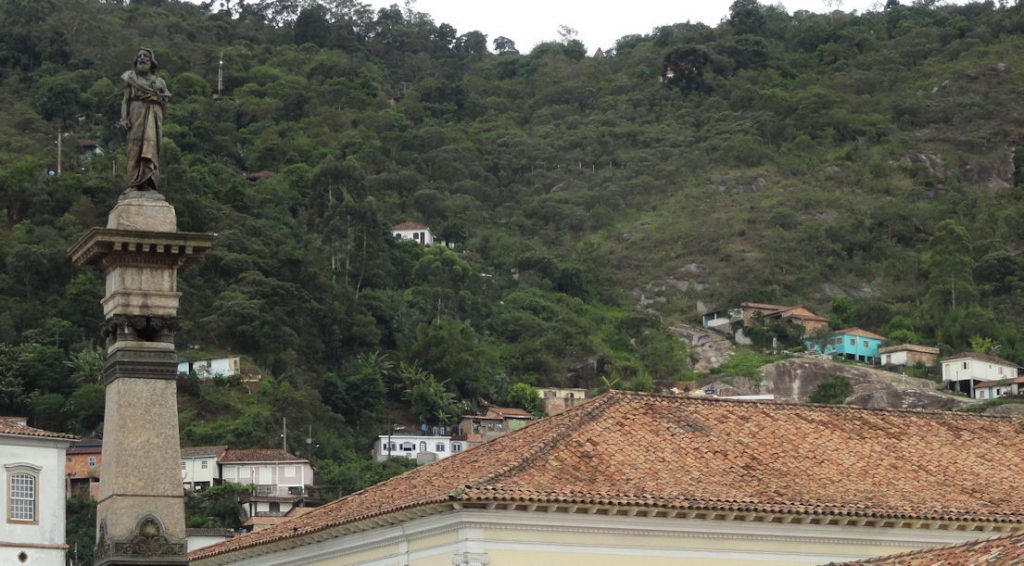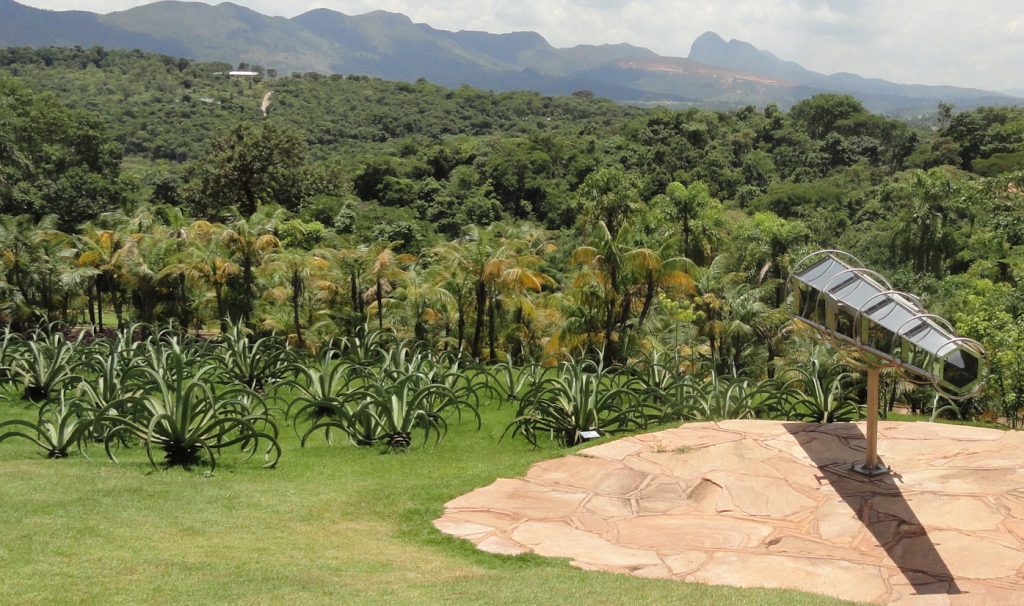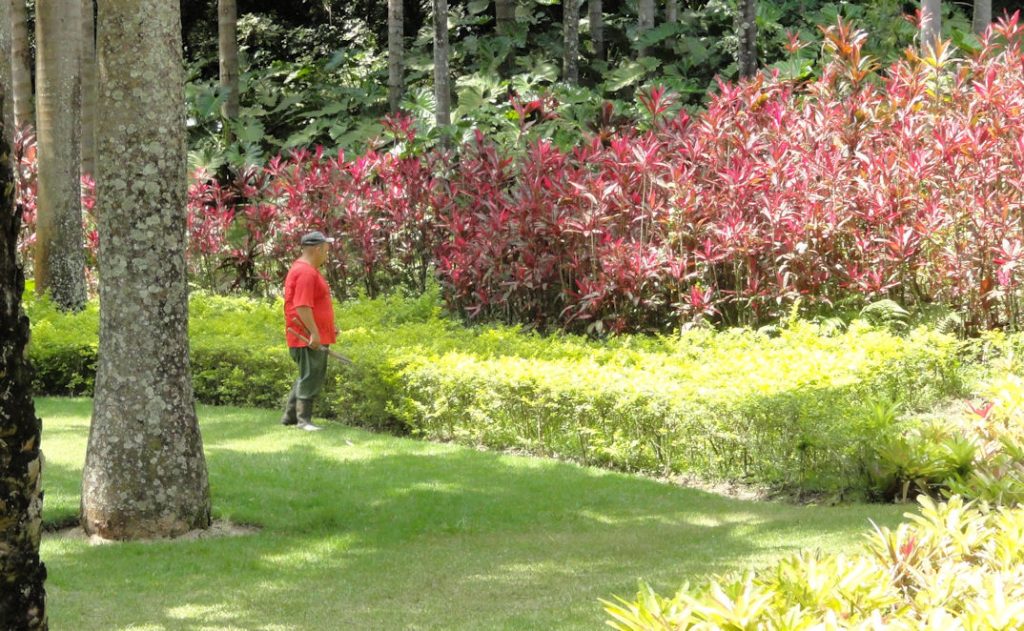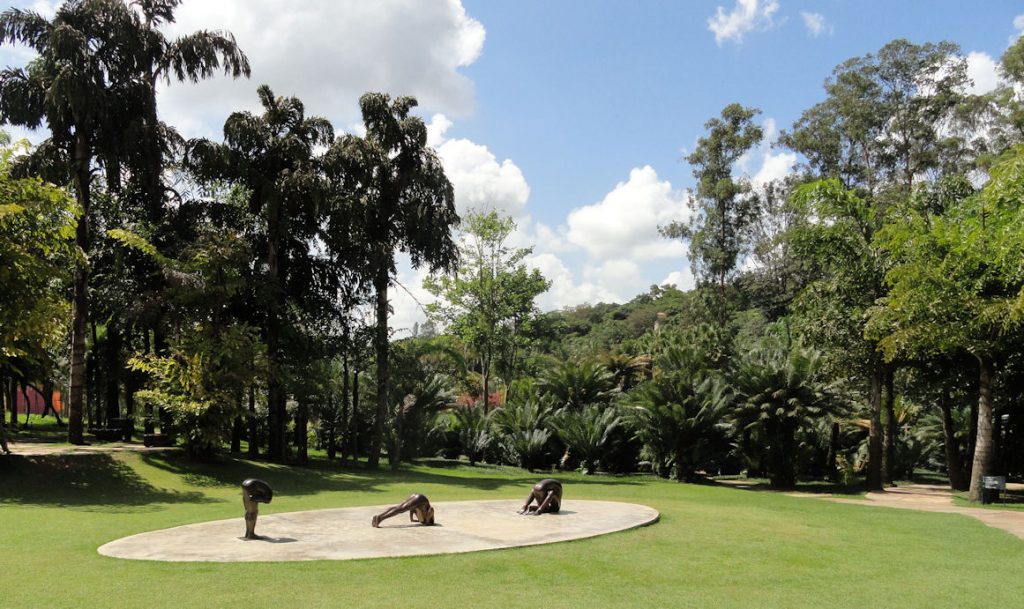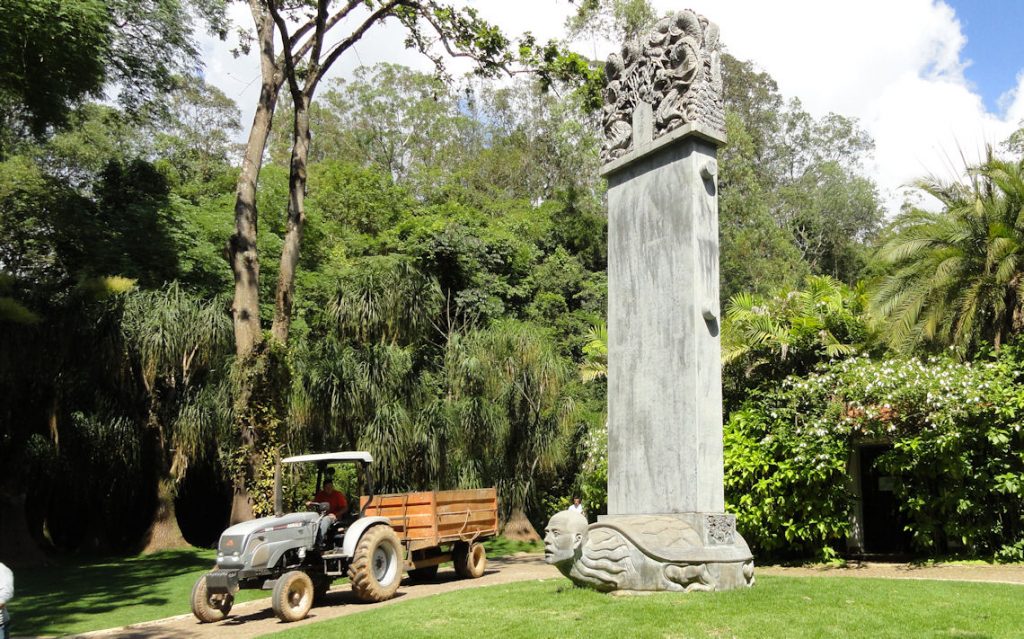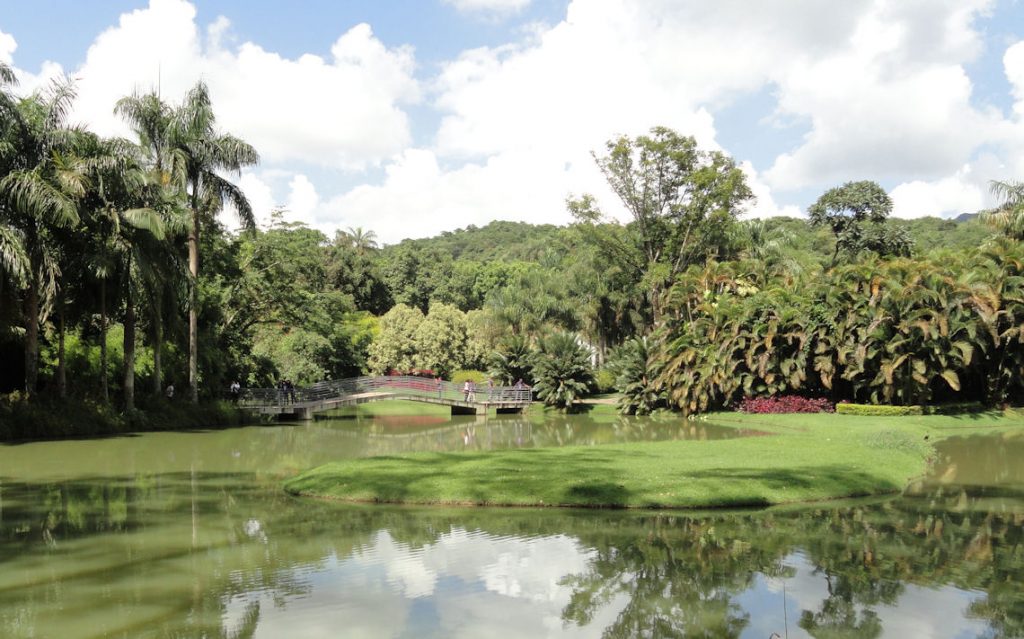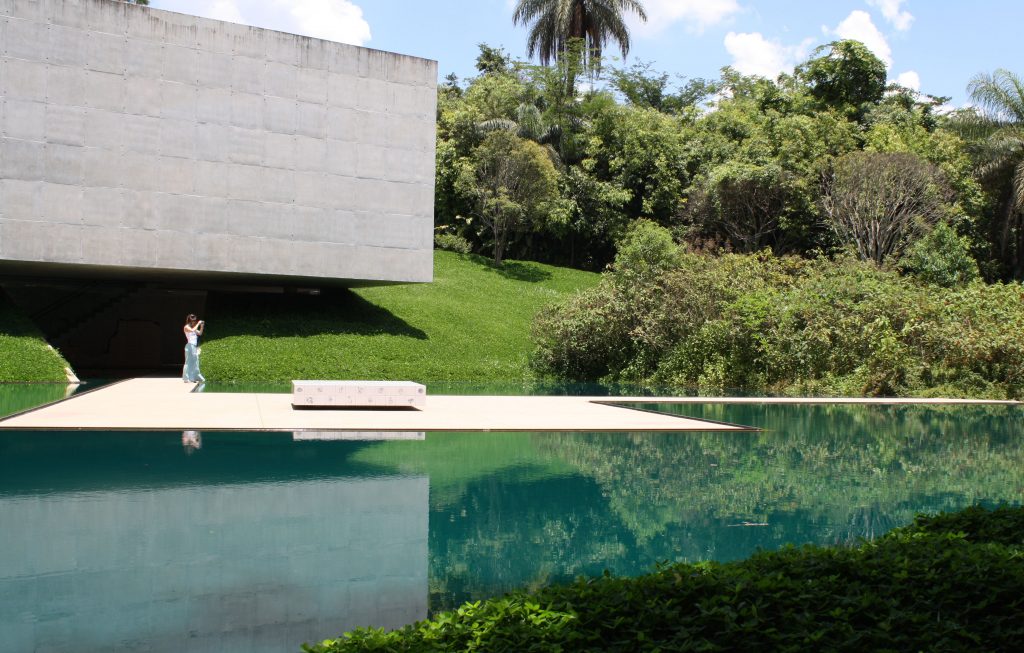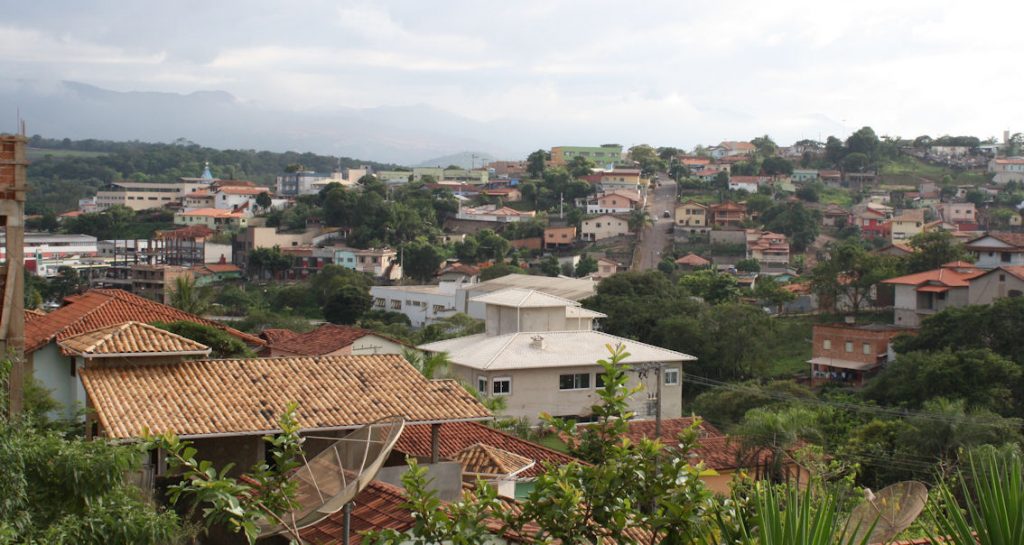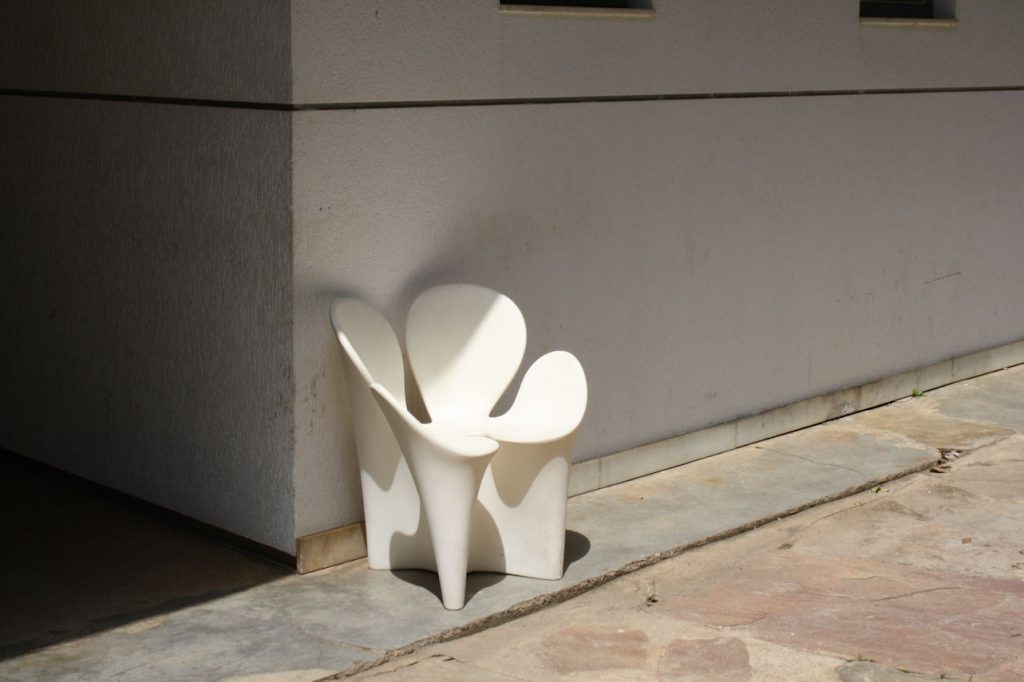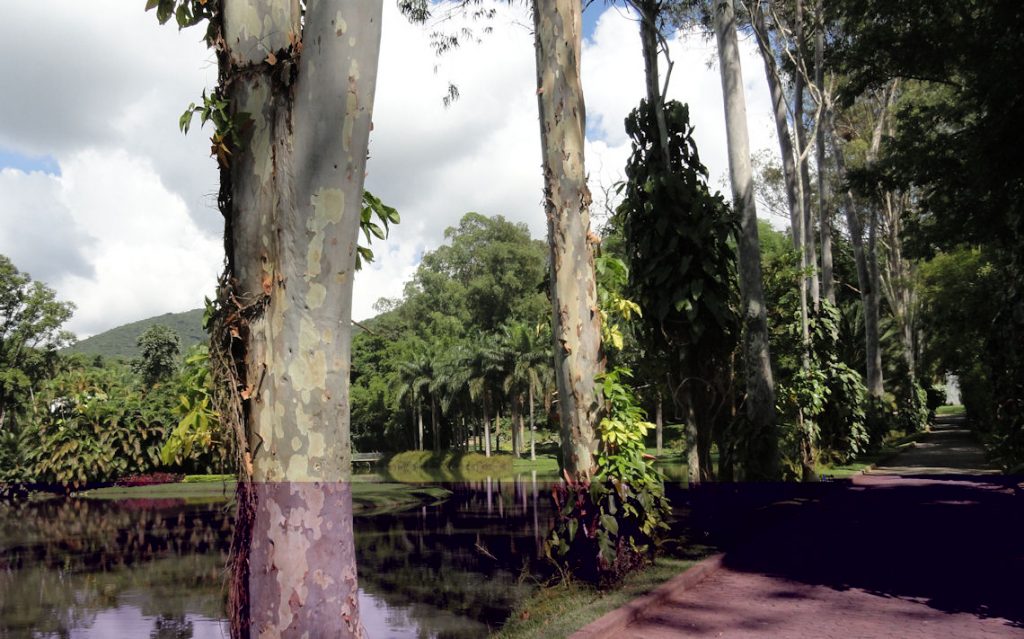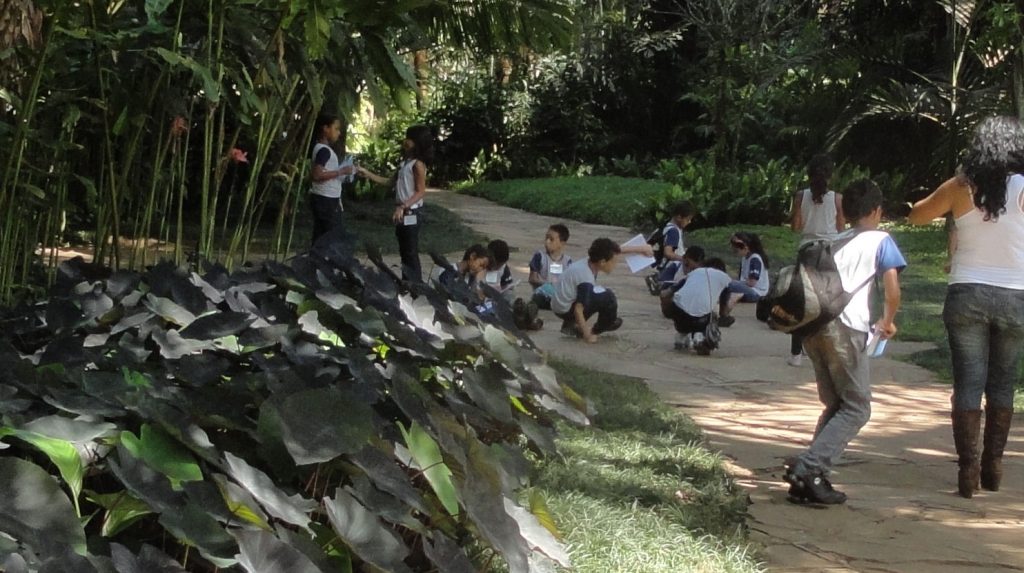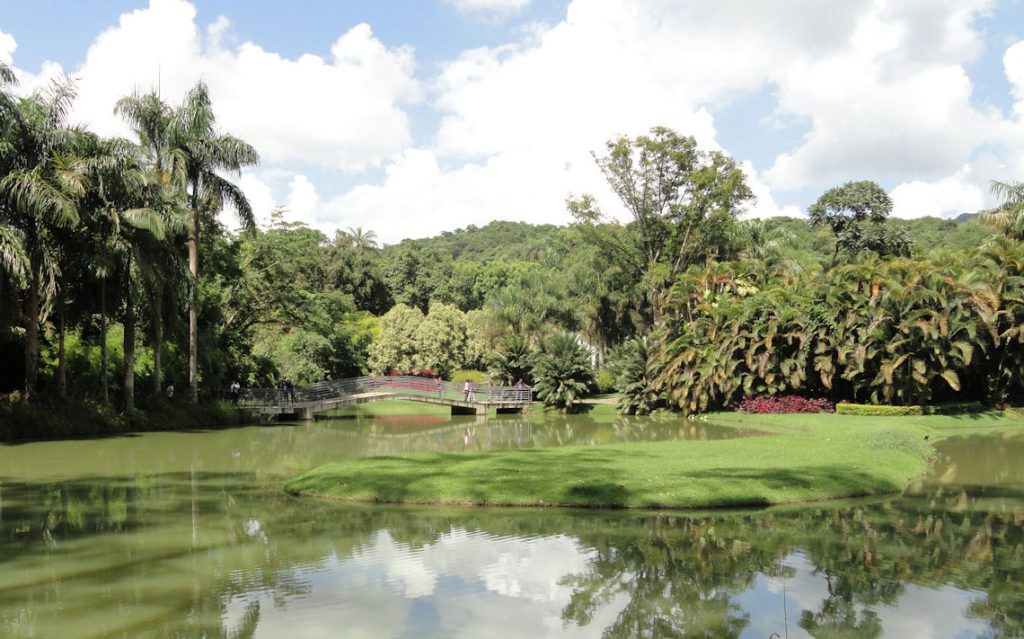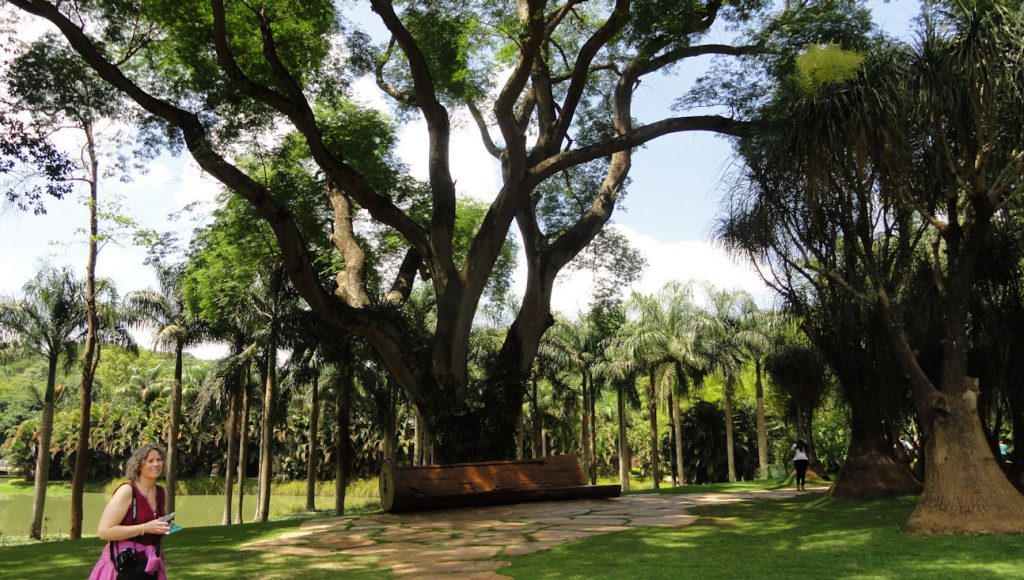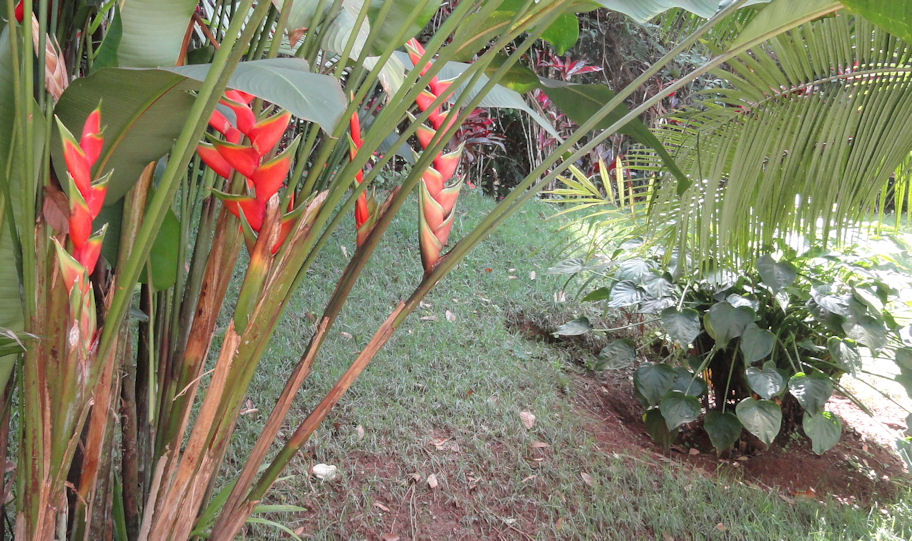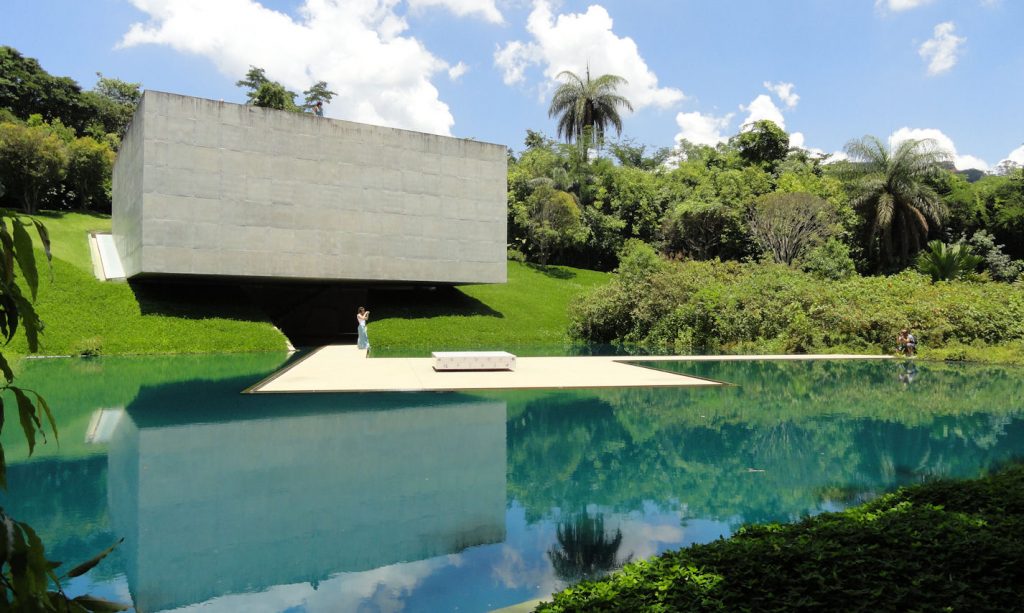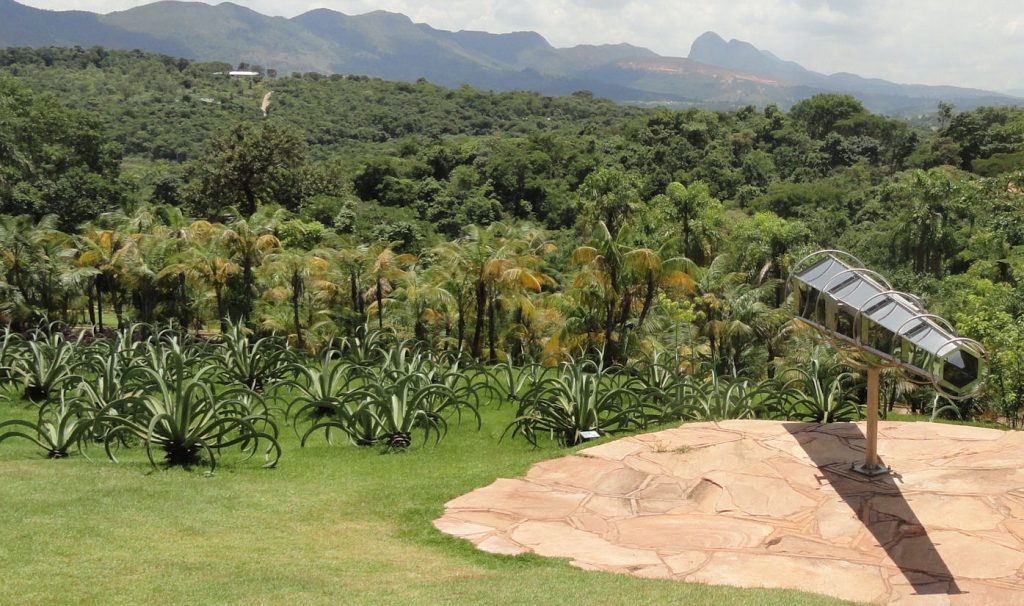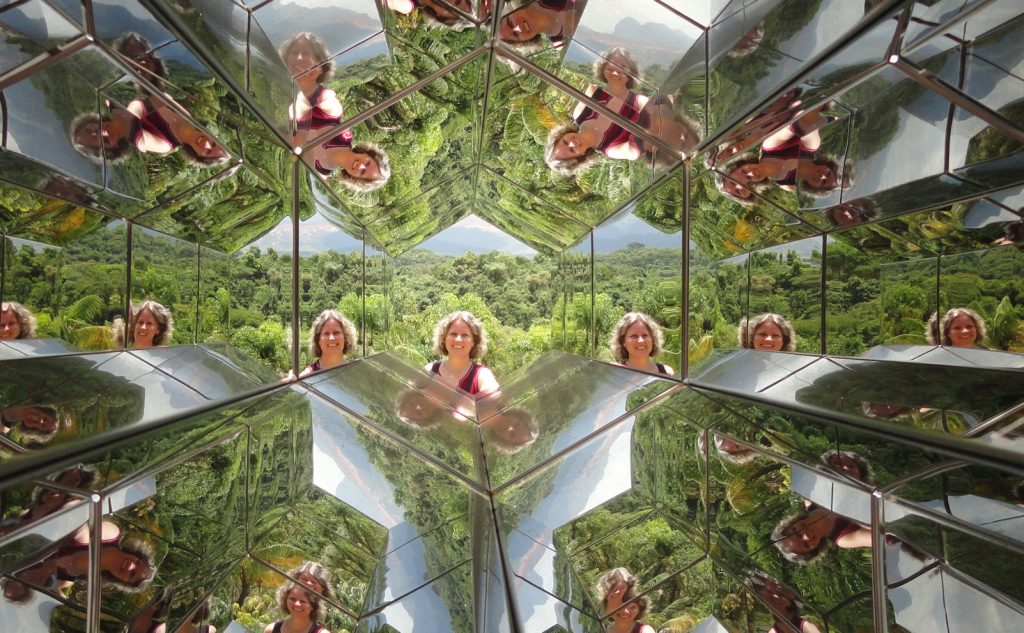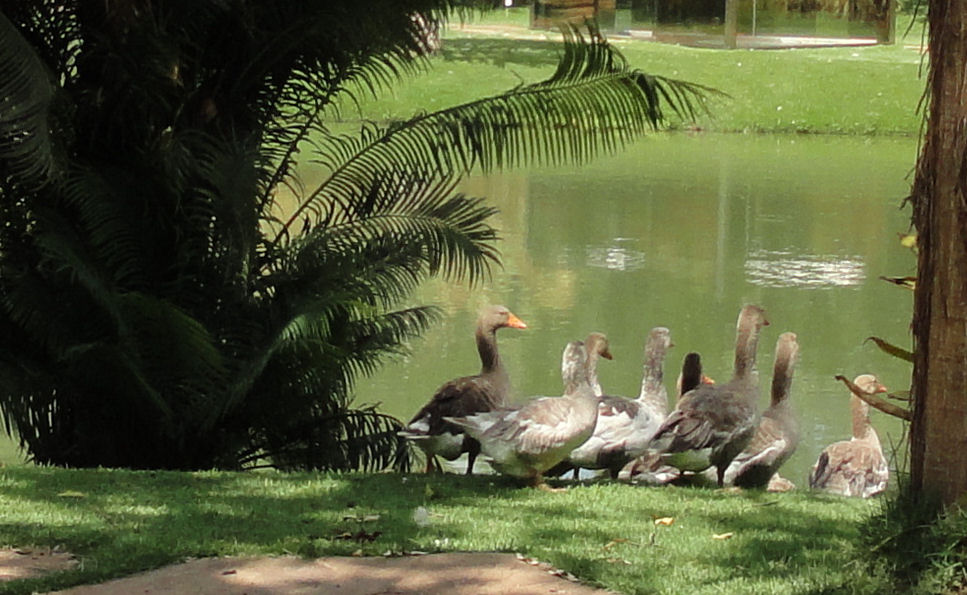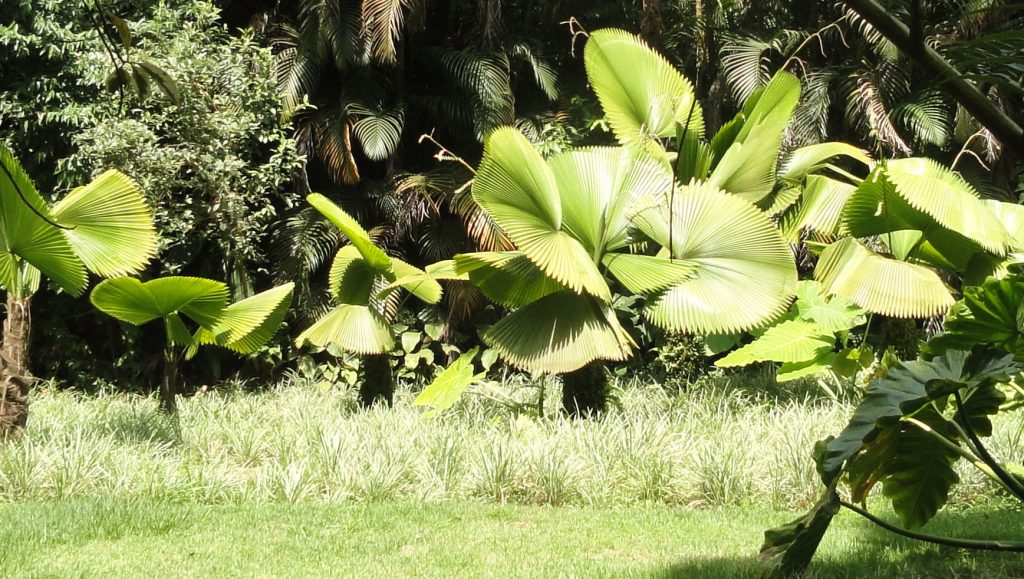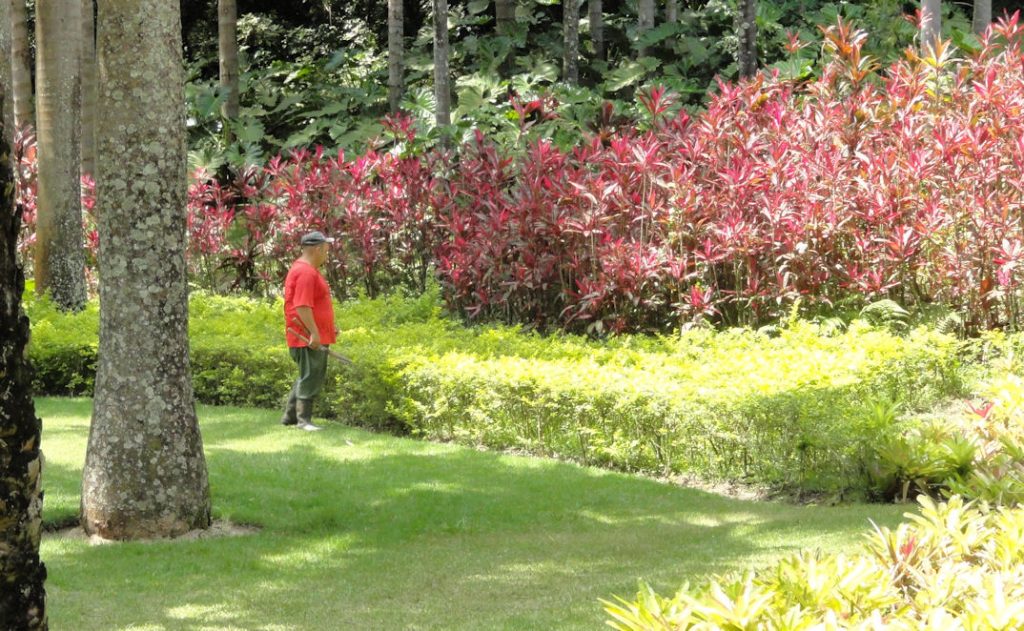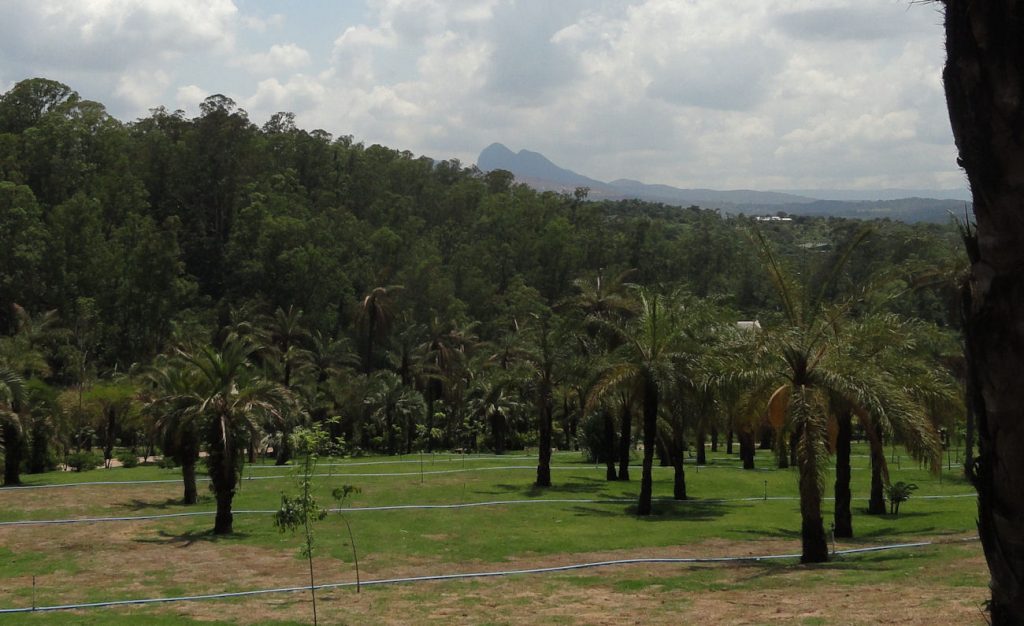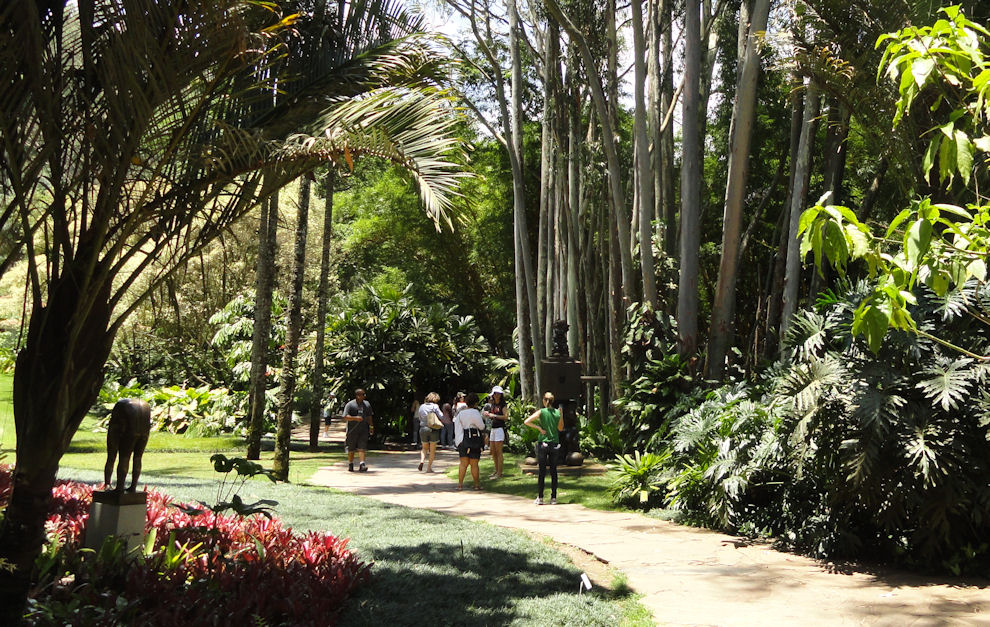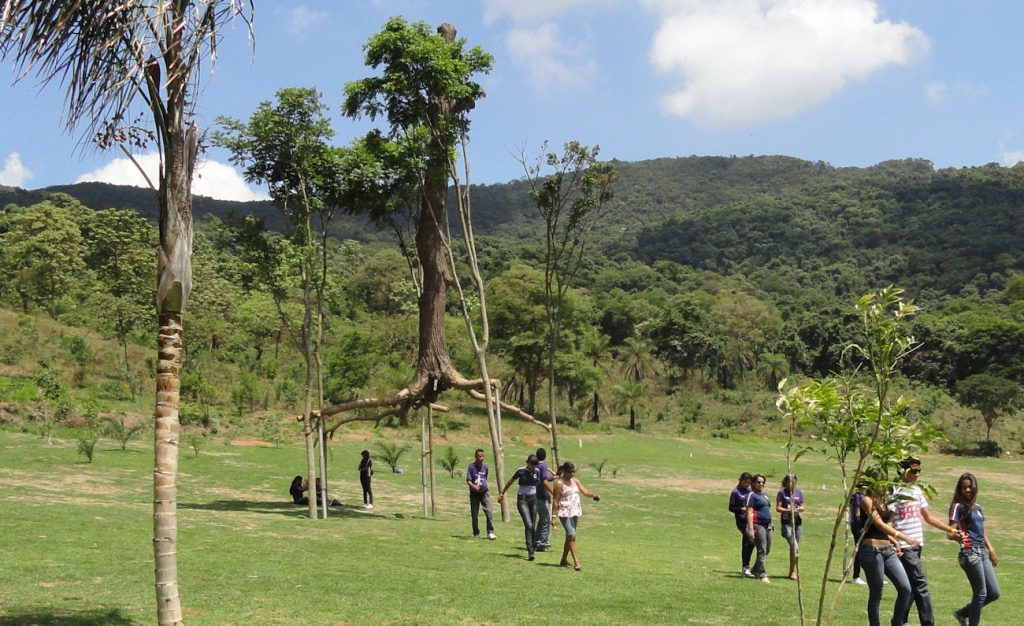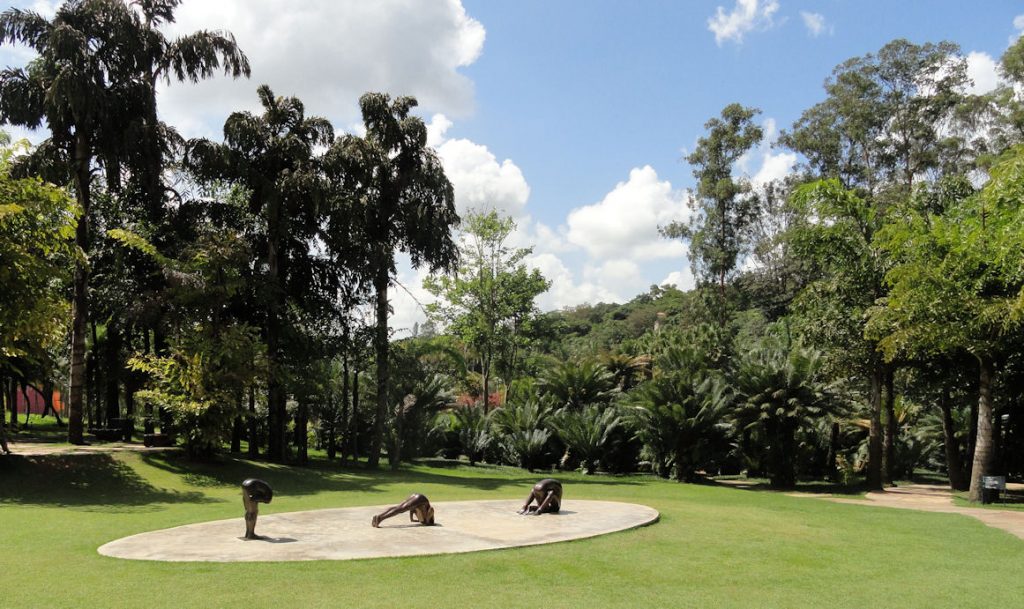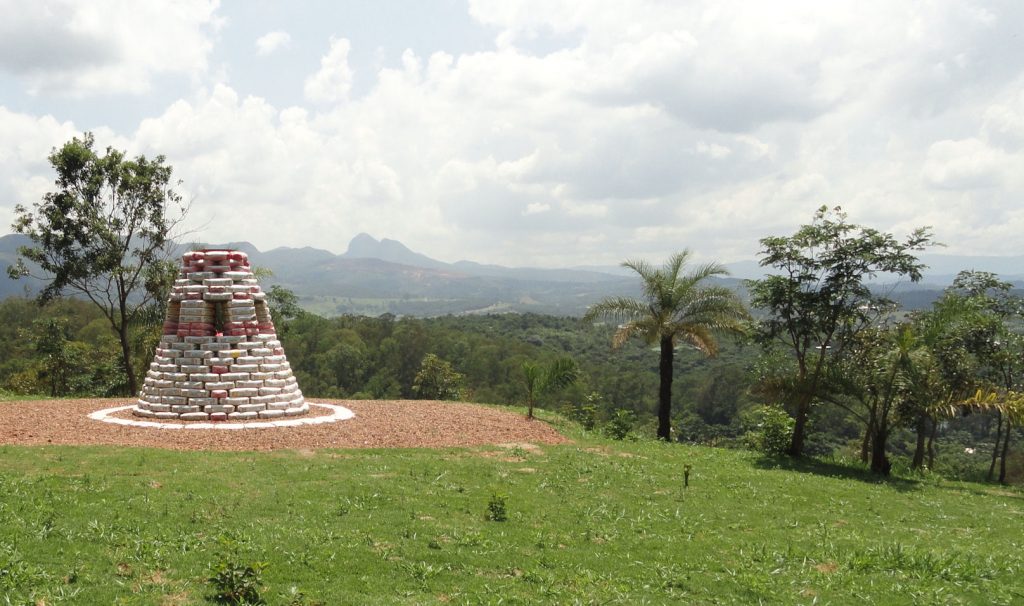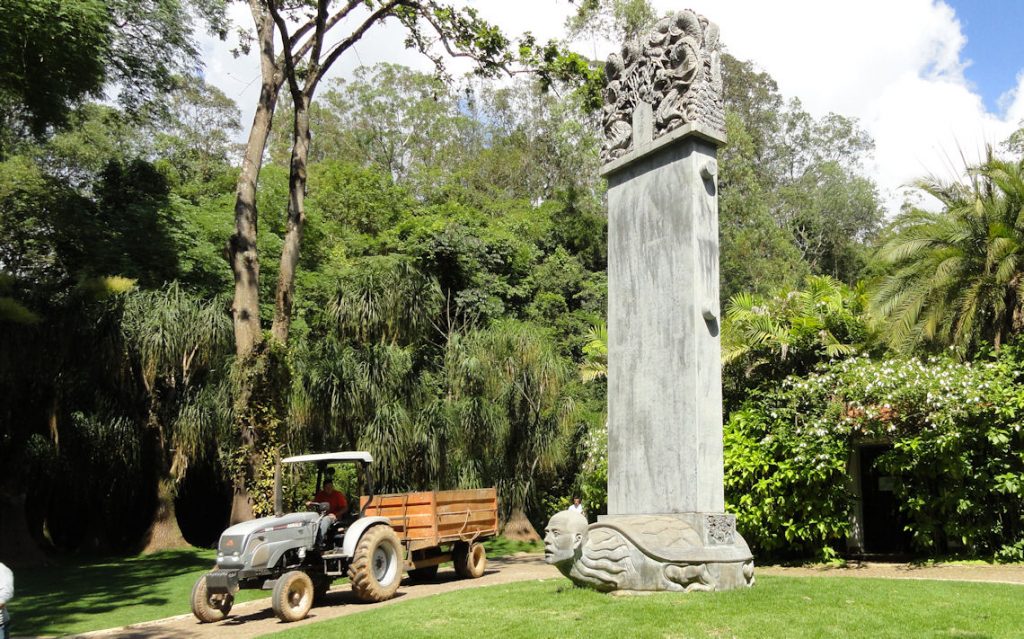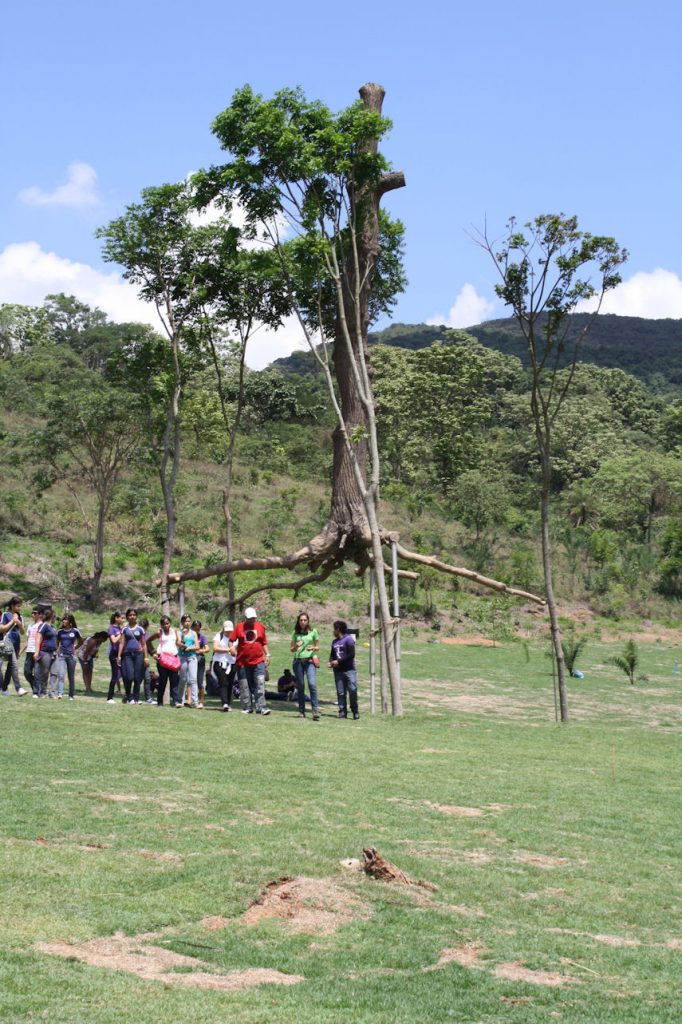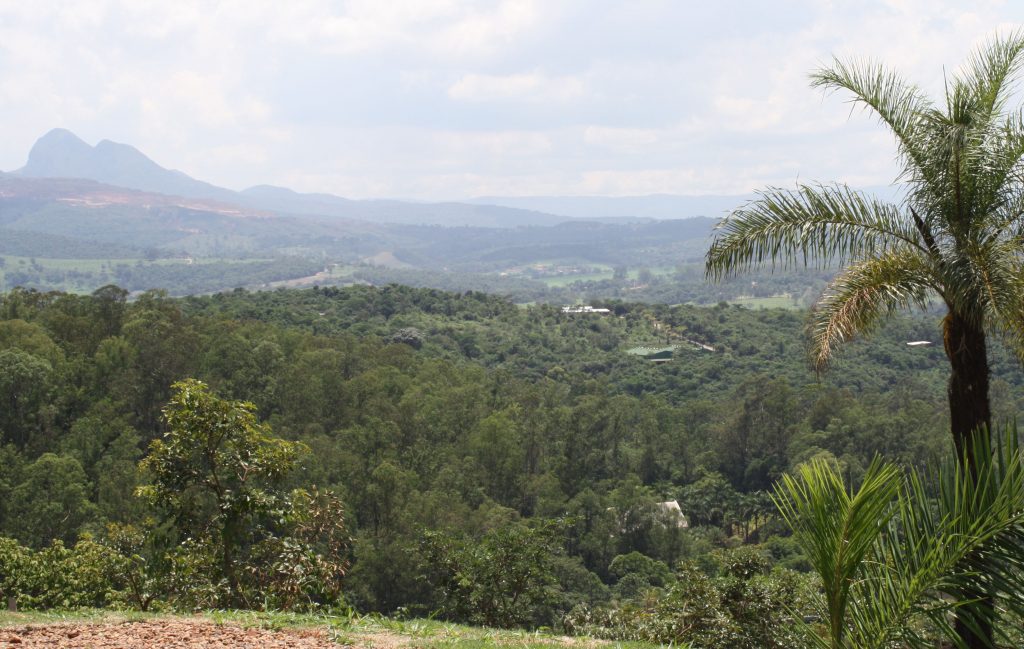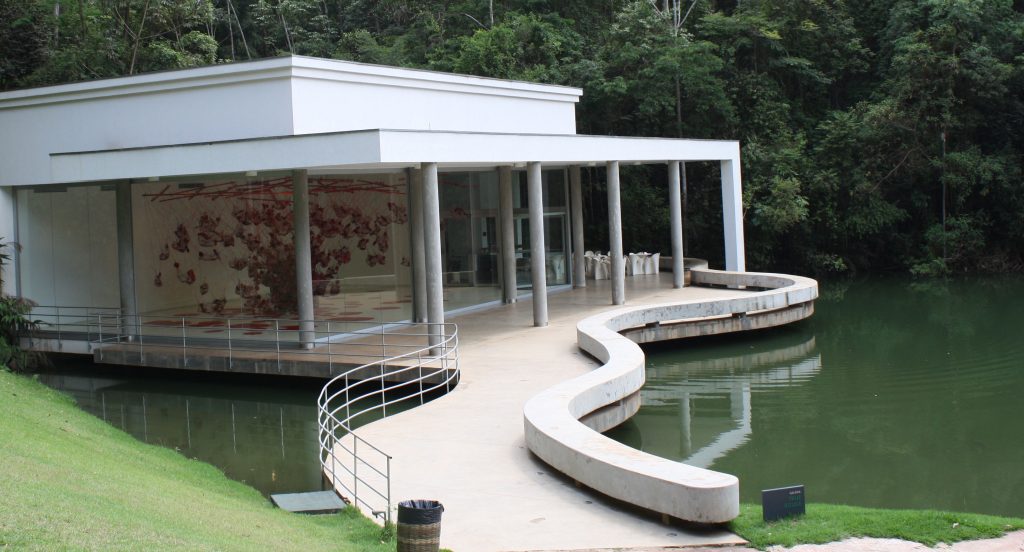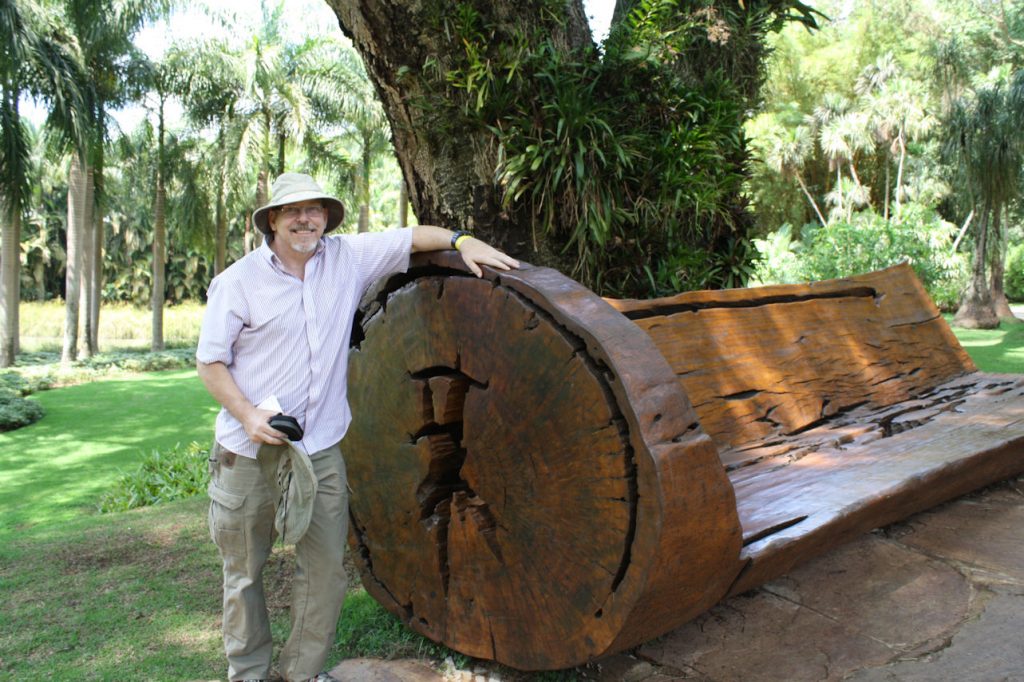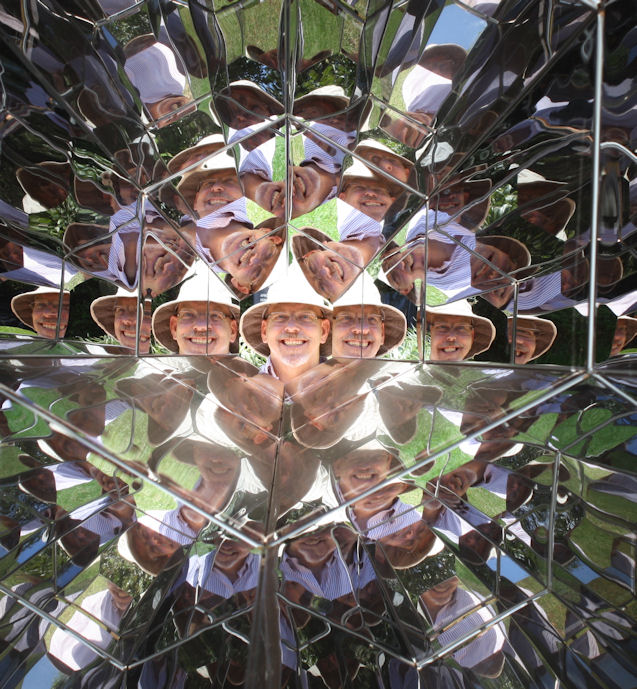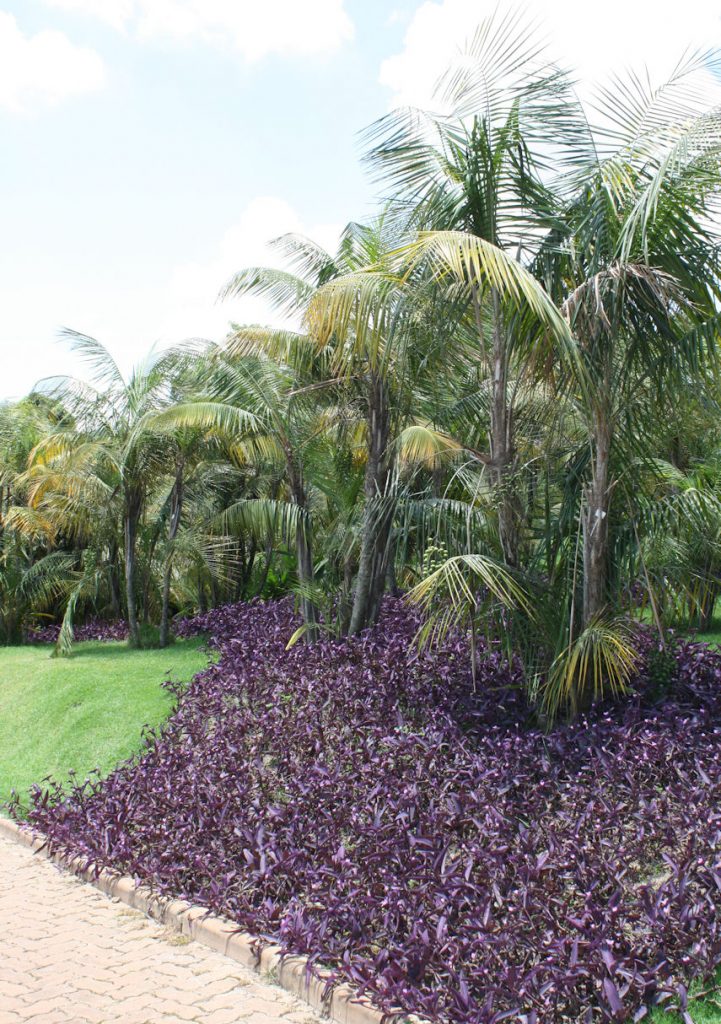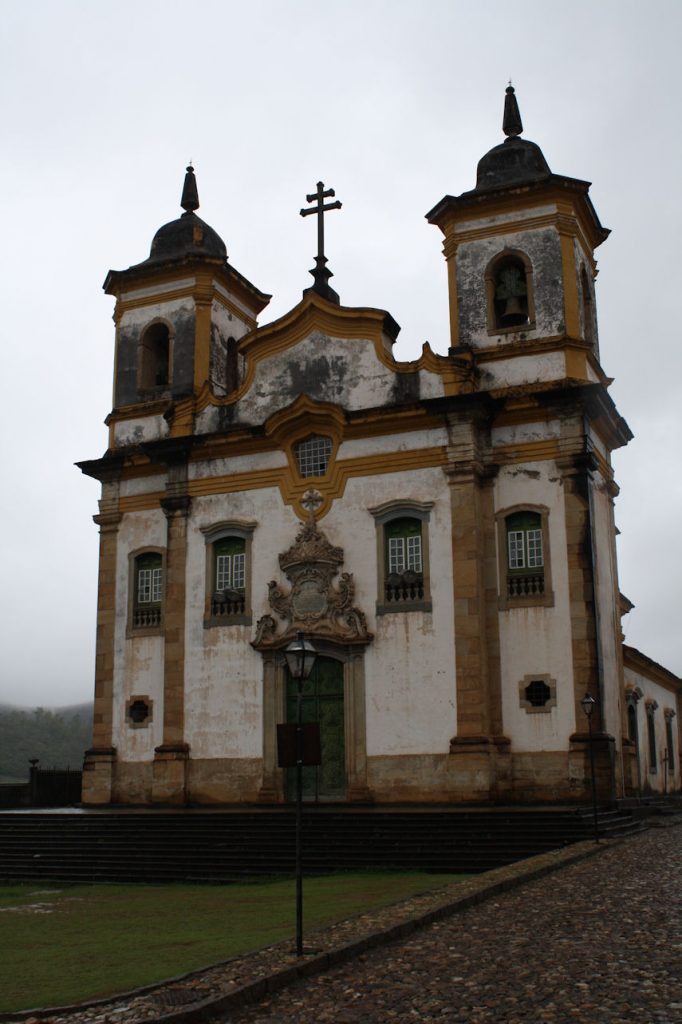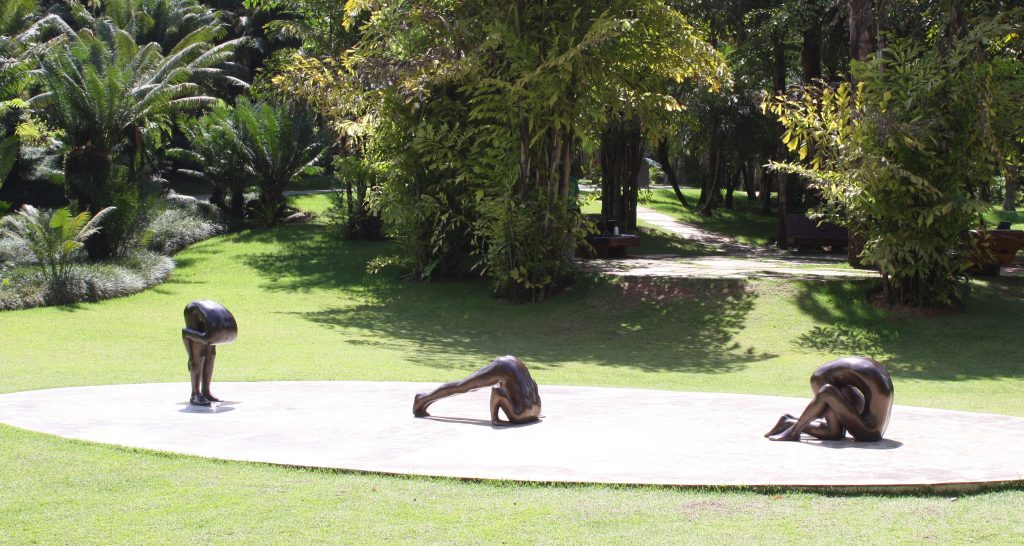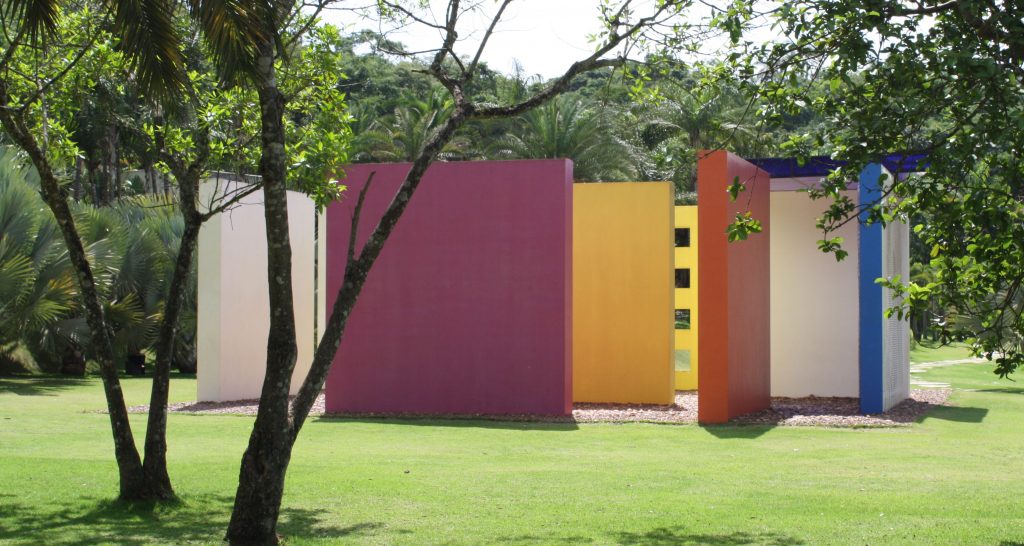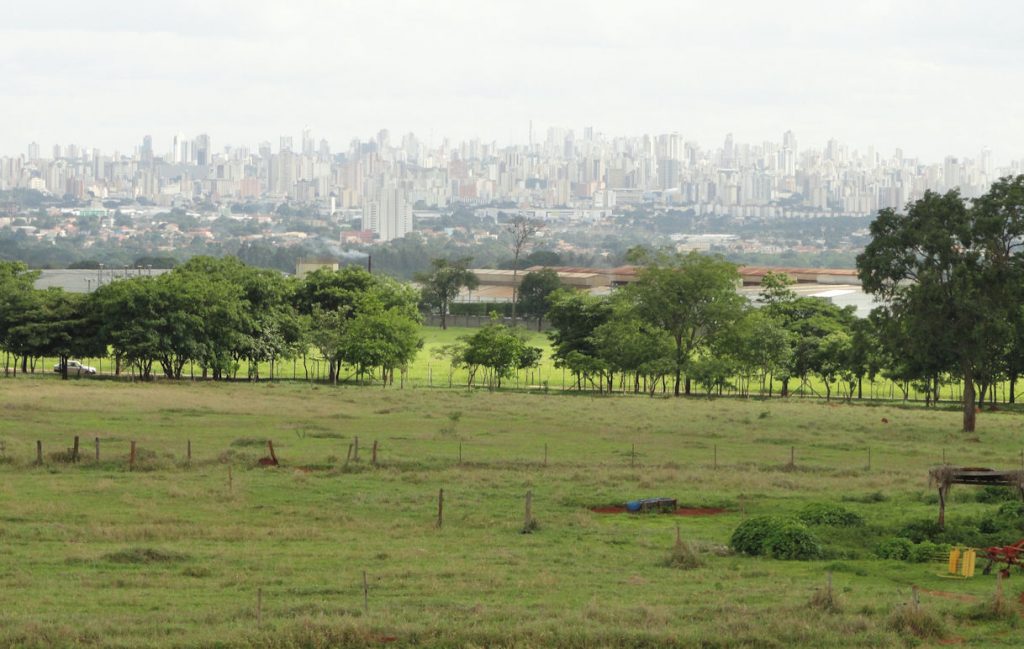
Goiania is what demographer Joel Kotkin would call a city of aspiration, a place where people go to enjoy upward mobility and live the kind of life they dreamed about. I have written about this subject before. It is a heartland city that grew from the soil of Goiás. Most of the people who live there are from the city itself or from the area of Goiás, there has not been large scale immigration to Goiania from other regions of Brazil. Goiania is only around seventy-five years old. It was a planned city, but it grew well beyond the projection. The plan was for 80,000 people; there are now a million and a half.
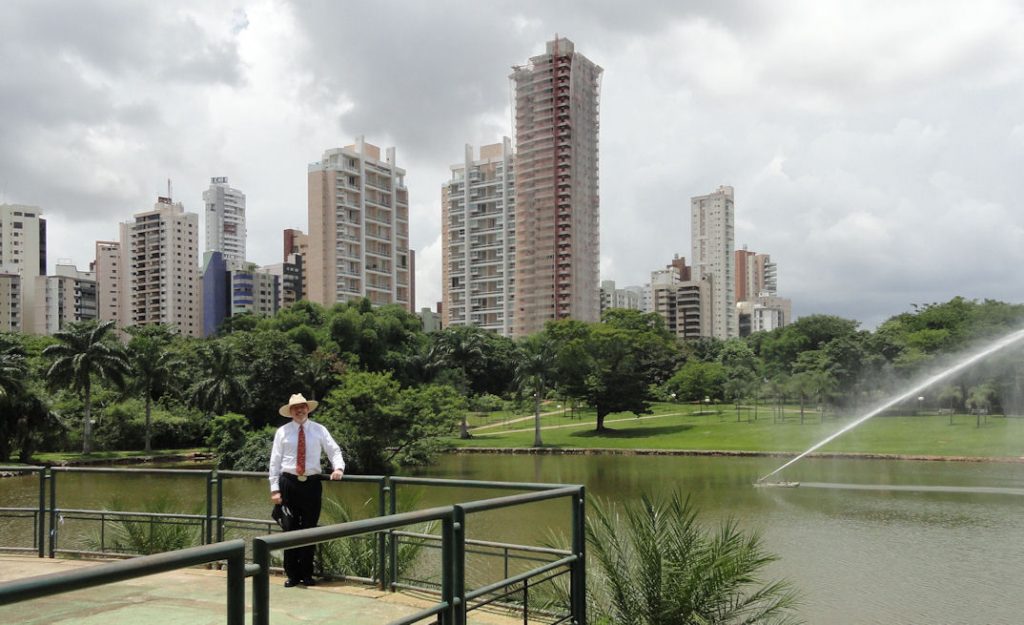
The picture up top is a good representation of the way the city has grown out of the cerrado. There is not much around and suddenly the city. I took the picture from the Federal University. They told me that the university was built outside town and it is still outside, but the city is creeping up.
You can see the growing city behind me in the second picture. The guy from the BNC told me that this area was mostly undeveloped when he was a young man about twenty years ago. Now there are lots of restaurants and shops. The park in the foreground, called Vaca Brava or angry cow, was just a field and that lake was just a stream with some wetlands around it. The actual name is O Parque Sulivan Silvestre. Vaca Brava comes from the name of one of the ranches that used to occupy the place. Who knows whether or not the eponymous angry cow really existed?
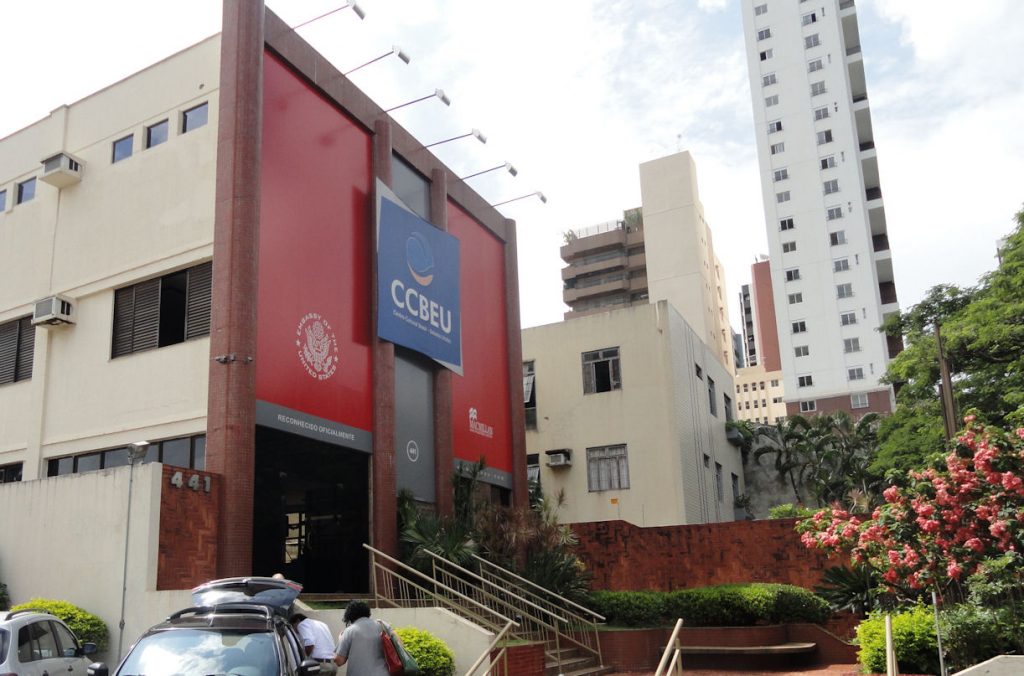
The BNC is across the street from the Vaca Brava Park. That was our first stop of the day. They have around 3500 students. They also do educational advising and cultural programs. The Ciência sem Fronteiras program has significantly increased the workload for the advising center. Not only are more people coming in for advice but they are doing a booming business in translating school transcripts. The demand for TOEFL (English as a foreign language) tests is exceeding supply.
Most Brazilian students have not taken the TOEFL; it was a much slower business before Dilma’s program came on. They are trying to increase the number of TOEFL tests available, but there are challenges. ETS doesn’t compensate test centers very much, so it is hard to get space. Some students have to make long trips just to take the test and it is not cheap. It costs about $R300, which is big money to some people. At the BNC and at both the Federal University and PUC they complained about the TOEFL, so I figure it must be a valid problem. Unfortunately, the test is an unavoidable step on the way to U.S. schools.
I later spoke with people from CAPES and Fulbright who told me that many students who would have gone to the U.S. to study in January were postponed for want to TOEFL.
English teaching in Brazil as changed, first of all because demand has spiked. Ciência sem Fronteiras has accelerated the trend, but it existed before. But another reason is that there has also been an inversion in ability, probably because of TV and Internet. It used to be that the older students were the more advanced. It made sense, since they were in longer. Now, however, the younger kids are the ones leading the way. The teachers mentioned that they sometimes feel sorry for older students, who have a harder time and seem to have just missed the boat on the enhanced English exposure.
We saw a couple of pilots who were learning English. They need English for their jobs and there is evidently a small but important job market for pilots to fly down private planes purchased in the U.S. by Brazilians. The BNC, however, does not teach specialized English for pilots or other professionals. The demand is not sufficient and they lack teachers with the specialized skills.


